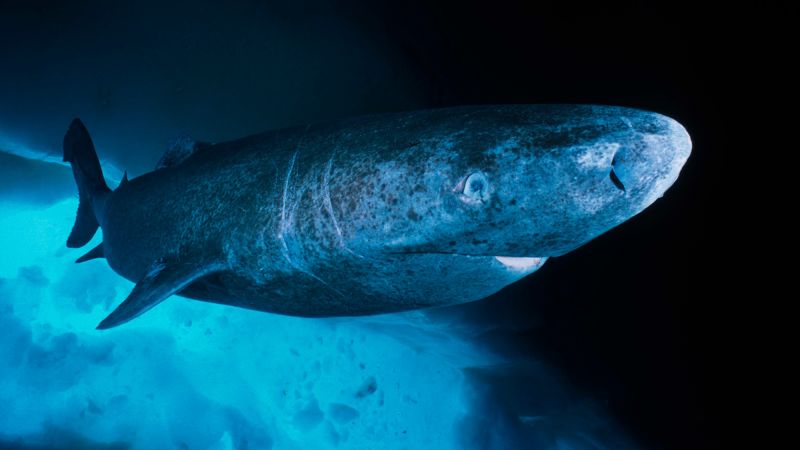The Greenland shark has long evaded our understanding, being an enigmatic creature lurking in the frigid depths of the North Atlantic and Arctic oceans. Uniquely adapted, these sharks endure freezing temperatures year-round, making them the only sharks capable of thriving in such environments. Some estimates suggest that certain Greenland sharks could have been swimming around since the colonial era, raising curiosity among researchers about their remarkable longevity and the biological mechanisms supporting it.
Historically thought to possess a prolonged lifespan due to their sluggish metabolism, the Greenland shark was finally identified as the longest-living vertebrate through research published in 2016. Studies indicated that they could potentially live up to 400 years, with estimates ranging from 272 to over 500 years. However, the exact processes enabling such astonishing longevity remained largely unexplored. Recently, a group of international scientists embarked on a groundbreaking journey to map the genome of the Greenland shark, effectively sequencing about 92% of its DNA and uncovering astonishing insights into its life span.
Dr. Steve Hoffman, a senior author of related research and computational biologist at the Leibniz Institute on Aging in Germany, highlighted that understanding the accumulated mutations in the shark’s genome could unveil clues about their exceptional longevity. The complete genome assembly serves as a critical resource, allowing researchers to delve into the molecular underpinnings of how these sharks manage to live so long.
The findings were released as a preprint paper, inviting the scientific community to further study and analyze the genome. This collaborative approach underscores the importance of uncovering genetic factors that may extend the human lifespan while emphasizing the value of understanding long-lived species. The quest to decipher the genes that contribute to longevity in the Greenland shark may provide insights that could be valuable for human health and aging.
The unique genetic makeup of the Greenland shark is noteworthy, with the species growing at an astonishingly slow rate of less than 1 cm per year. They can reach lengths exceeding 6 meters and only mature sexually after a century. Interestingly, the team discovered that the shark’s genome is twice as large as that of a human, raising questions about the relationship between genome size and lifespan. An essential aspect of the shark’s genomic structure is attributed to its incredible ability to repair DNA—a characteristic often observed in other long-lived animals such as tortoises and the naked mole rat.
Remarkably, over 70% of the Greenland shark’s genome comprises “jumping genes,” which can replicate and insert themselves into different genome regions, sometimes leading to genetic mutations. While these elements are often regarded as detrimental, the researchers posited that in the Greenland shark, DNA repair genes might function as redistributive elements, mitigating any potential damage from their transposons, thereby enhancing DNA integrity.
With this highly specialized genome, researchers aim to further study the evolutionary processes at play. Dr. Nicole Phillips, an ecologist not involved in the research, emphasized the need for more high-quality genome sequences among sharks, as it would enrich our comprehension of the genetic bases of aging across species. Historically, little information about Greenland sharks was gathered due to their preference for deep-sea habitats, but recent technological advancements such as remotely operated vehicles and baited cameras have facilitated better data collection.
The researchers conducted their studies with utmost diligence, obtaining necessary permits for tissue samples through humane euthanasia of a few specimens. This method not only allows for research advancement but raises awareness concerning the conservation of the Greenland shark, recognized as a vulnerable species on the International Union for Conservation of Nature’s Red List.
Dr. Toby Daly-Engel, an associate professor at the Florida Institute of Technology, articulated how the knowledge gleaned about the Greenland shark’s genome could offer profound insights into the evolution of genomes in general. Further, Dr. Gorbunova from the University of Rochester discussed the significance of understanding diverse evolutionary paths to enhance human DNA repair mechanisms, thereby potentially prolonging human lifespans.
Gaining a thorough understanding of the mechanisms that allow long-lived species like the Greenland shark to thrive can pave the way for developing medical interventions aimed at promoting healthier aging in humans. Ultimately, the study of this ancient shark species possesses multifaceted implications, potentially leading us toward a deeper understanding of longevity and DNA repair in both human biology and conservation efforts.



